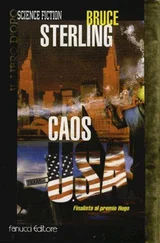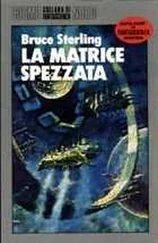Bruce Sterling - Essays. FSF Columns
Здесь есть возможность читать онлайн «Bruce Sterling - Essays. FSF Columns» весь текст электронной книги совершенно бесплатно (целиком полную версию без сокращений). В некоторых случаях можно слушать аудио, скачать через торрент в формате fb2 и присутствует краткое содержание. Жанр: Фантастика и фэнтези, на английском языке. Описание произведения, (предисловие) а так же отзывы посетителей доступны на портале библиотеки ЛибКат.
- Название:Essays. FSF Columns
- Автор:
- Жанр:
- Год:неизвестен
- ISBN:нет данных
- Рейтинг книги:3 / 5. Голосов: 1
-
Избранное:Добавить в избранное
- Отзывы:
-
Ваша оценка:
- 60
- 1
- 2
- 3
- 4
- 5
Essays. FSF Columns: краткое содержание, описание и аннотация
Предлагаем к чтению аннотацию, описание, краткое содержание или предисловие (зависит от того, что написал сам автор книги «Essays. FSF Columns»). Если вы не нашли необходимую информацию о книге — напишите в комментариях, мы постараемся отыскать её.
Essays. FSF Columns — читать онлайн бесплатно полную книгу (весь текст) целиком
Ниже представлен текст книги, разбитый по страницам. Система сохранения места последней прочитанной страницы, позволяет с удобством читать онлайн бесплатно книгу «Essays. FSF Columns», без необходимости каждый раз заново искать на чём Вы остановились. Поставьте закладку, и сможете в любой момент перейти на страницу, на которой закончили чтение.
Интервал:
Закладка:
Almost every large urban antenna-tower, the kind you might see in everyday life, belongs to some commercial entity. Military and scientific-research antennas are more discreet, usually located in remote enclaves. Furthermore, they just don't look like commercial antennas. Military communication equipment is not subject to commercial restraints and has a characteristic appearance: rugged, heavy-duty, clunky, serial-numbered, basically Soviet-looking. Scientific instruments are designed to gather data with an accuracy to the last possible decimal point. They may look frazzled, but they rarely look simple. Broadcast tower equipment by contrast is designed to make money, so it looks cheerfully slimmed-down and mass-produced and gimcrack.
Of course, a commercial antenna must obey the laws of physics like other antennas, and has been designed to do that, but its true primary function is generating optimal revenue on capital investment. Towers and their antennas cost as little as possible, consonant with optimal coverage of the market area, and the likelihood of avoiding federal prosecution for sloppy practices. Modern antennas are becoming steadily more elaborate, so as to use thinner slices of spectrum and waste less radiative power. More elaborate design also reduces the annoyance of stray, unwanted signals, so-called "electromagnetic pollution."
Towers fall under the aegis of not one but two powerful bureaucracies, the FCC and the FAA, or Federal Aviation Administration. The FAA is enormously fond of massive air-traffic radar antennas, but dourly regards broadcast antennas as a "menace to air navigation." This is the main reason why towers are so flauntingly obvious. If towers were painted sky-blue they'd be almost invisible, but they're not allowed this. Towers are hazards to the skyways, and therefore they are striped in glaring "aviation white" and gruesome "international orange," as if they were big traffic sawhorses.
Both the FCC and FAA are big outfits that have been around quite a while. They may be slow and cumbersome, but they pretty well know the name of the game. Safety failures in tower management can draw savage fines of up to a hundred thousand dollars a day. FCC regional offices have mandatory tower inspection quotas, and worse yet, the fines on offenders go tidily right into the FCC's budget.
That orange and white paint costs a lot. It also peels off every couple of years, and has to be replaced, by hand. Depending on the size of the tower, it's sometimes possible to get away with using navigation- hazard lights instead of paint, especially if the lights strobe. The size of the lights, and their distribution on the tower structure, and their wattage, and even their rate and method of flashing are all spelled out in grinding detail by the FCC and FAA.
In the real world -- and commercial towers are very real-world structures -- lights aren't that much of an advantage over paint. The bulbs burn out, for one thing. Rain shorts out the line. Ice freezes solid on the high upper reaches of the tower, plummets off in big thirty- pound chunks, cracking the lights off (not to mention cracking the lower-mounted antennas, the hoods and windshields of utility trucks, and the skulls of unlucky technicians). The lights' power sometimes fails entirely.
And people shoot the lights and steal them. In the real world, people shoot towers all the time. Something about towers -- their dominating size, their lonely locales, or maybe it's that color-scheme and that pesky blinking -- seems to provoke an element of trigger-happy lunacy in certain people. Bullet damage is a major hassle for the tower owner and renter.
People, especially drunken undergraduates in college towns, often climb the towers and steal the hazard lights as trophies. If you visit the base of a tower, you will usually find it surrounded with eight-foot, padlocked galvanized fencing and a mean coil of sharp razor-wire. But that won't stop an active guy with a pickup, a ladder, and a six-pack under his belt.
The people who physically build and maintain towers refer to themselves as "tower hands." Tower engineers and designers refer to these people as "riggers." The suit- and-tie folks who actually own broadcasting stations refer to them as "tower monkeys." Tower hands are blue-collar industrial workers, mostly agile young men, mostly nonunionized. They're a special breed. Not everybody can calmly climb 2,000 feet into their air with a twenty- pound tool-belt of ohmmeters, wattmeters, voltage meters, and various wrenches, clamps, screwdrivers and specialized cutting tools. Some people get used to this and come to enjoy it, but those who don't get used to it, *never* get used to it.
While 2,000 feet in the air, these unsung knights of the airwaves must juggle large, unwieldy antennas. Quite often they work when the station is off the air -- in the midnight darkness, using helmet-mounted coal-miners' lamps. And it's hot up there on the tower, or freezing, or wet, and almost always windy.
The commonest task in the tower-hand's life is painting. It's done with "paint-mitts," big soppy gloves dipped in paint, which are stroked over every structural element in the tower, rather like grooming a horse. It takes a strong man a full day to paint a hundred feet of an average tower. (Rip-off hustlers posing as tower-hands can paint towers at "bargain rates" with amazing cheapness and speed. The rascals -- there are some in every business -- paint only the *underside* of the tower, the parts visible from the ground.)
Spray-on paint can be faster than hand-work, but with even the least breeze, paint sprayed 2,000 feet up will carry hundreds of yards to splatter the roofs, walls, and cars of angry civilians with vivid "international orange." There simply isn't much calm air 2,000 feet up in the sky. High-altitude wind doesn't have to deal with ground-level friction, so wind-speed roughly doubles about every thousand feet.
Building towers is known in the trade as "stacking steel." The towers are shipped in pieces, then bolted or welded into segments, either on-site or at the shop. The rigid sections are hauled skyward with a winch-driven 'load line,' and kept from swaying by a second steel cable, the 'tag-line.' Each section is bootstrapped up above the top of the tower, through the use of a tower- mounted crane, called the 'gin pole.' The gin pole has a 360-degree revolving device at its very top, the 'rooster head.' Each new section is deliberately hauled up, spun deftly around on the rooster head, stacked on top of all the previous sections, and securely bolted into place. Then the tower hands detach the gin pole, climb the section they just stacked, mount the ginpole up at the top again, and repeat the process till they're done.
Tower construction is a mature industry; there have not been many innovations in the last forty years. There's nothing new about galvanized steel; it's not high- tech, but it's plenty sturdy, it's easy to work and weld, and it gets the job done. The job's not cheap. In today's market, galvanized steel towers tend to cost about a million dollars per thousand feet of height.
Towers come in two basic varieties, self-supporting and guyed. The self-supporting towers are heavier and more expensive, their feet broadly splayed across the earth. Despite their slender spires, the guyed towers actually require more room. The bottom of a guyed tower is tapered and quite slender, often a narrow patch of industrial steel not much bigger than the top of a child's school-desk. But the foundations for those guy cables stretch out over a vast area, sometimes 100 percent of the tower's height, in three or four different directions. It's possible to draw the cables in toward the tower's base, but that increases the "download" on the tower structure.
Towers are generally built as lightly as possible, commensurate with the strain involved. But the strain is very considerable. Towers themselves are heavy. They need to be sturdy enough to have tower-hands climbing any part of them, at any time, safely.
Читать дальшеИнтервал:
Закладка:
Похожие книги на «Essays. FSF Columns»
Представляем Вашему вниманию похожие книги на «Essays. FSF Columns» списком для выбора. Мы отобрали схожую по названию и смыслу литературу в надежде предоставить читателям больше вариантов отыскать новые, интересные, ещё непрочитанные произведения.
Обсуждение, отзывы о книге «Essays. FSF Columns» и просто собственные мнения читателей. Оставьте ваши комментарии, напишите, что Вы думаете о произведении, его смысле или главных героях. Укажите что конкретно понравилось, а что нет, и почему Вы так считаете.



